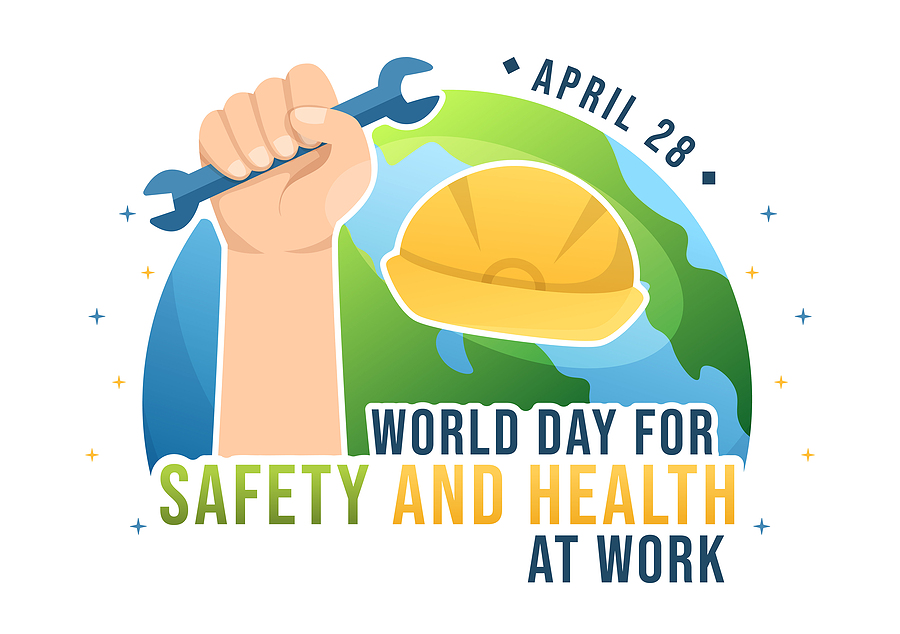April 28th marks World Day for Safety and Health at Work, an international observance recognizing the importance of maintaining a safe and healthy work environment for all. Why should your business join the global effort? It’s not just about compliance; it’s about cultivating a workplace where your employees feel respected, valued, and protected.
In this comprehensive guide, we’ll explore the critical aspects of workplace safety and health, with a focus on strategies to enhance this crucial facet of modern business for small businesses and large organizations alike.

The Significance of World Day for Safety and Health at Work
World Day for Safety and Health at Work is a day of commemoration and awareness in honor of workers who have died from work-related illness and accidents. It’s a reminder of the scale of the issue and a catalyst for action, serving as a platform for promoting safe practices and health initiatives in the workplace.
The day also spotlights the solemn truth that occupational accidents and diseases are preventable. It’s a call to action for employers to take the lead in creating safe work environments that not only address immediate hazards but also consider long-term health outcomes.
Workplace Safety Challenges and Statistics
Workplace safety is a significant challenge across the globe. According to the International Labor Organization, every 15 seconds, a worker dies from a work-related accident or disease. That’s 2.8 million deaths per year! These statistics not only reflect a human tragedy but also a serious drain on economic resources. Lost workdays, compensation claims, and decreased productivity all have financial implications for businesses in every sector.
Common Causes of Accidents at Work
The most common causes of workplace accidents are slips, trips, and falls, followed closely by muscle strains from overexertion and accidents involving hazardous materials. These figures underscore the need for continuous vigilance and proactive safety measures.
Why Prioritize Safety and Health at Work for Small Businesses?
Often, small businesses with limited resources, particularly those in service or retail, might underestimate the importance of safety protocols. It’s important to note that small organizations experience proportionally higher accident rates than their larger counterparts, and the impact can be devastating.
Prioritizing safety at work is an investment in the company’s most valuable asset — its workforce. A safe and healthy work environment fosters higher morale, increased productivity, and lower turnover rates. It also shores up a company’s image with customers and prospective employees, signaling a commitment to ethical practices.
The Cost of Neglecting Safety
For small businesses, the costs can be significant. Injuries mean increased insurance premiums, potential legal costs, and the lost productivity of the injured employee. In some cases, a single serious incident could be financially crippling.
It’s not just about reacting to current regulations; it’s about predicting future legal and social trends. Expectations for companies to maintain high safety standards are increasing, and those who don’t adapt risk legal action and damaged reputations.
Building a Competitive Advantage
Focusing on safety is more than a defensive strategy to avoid accidents. It’s a platform to build a competitive advantage. Demonstrating a commitment to safety can be a key differentiator in winning contracts and securing customers. The message is clear for small businesses — investing in workplace safety, at any scale, is an investment in the business itself.
Practical Tips to Enhance Workplace Safety and Health
Understanding that safety is vital is one thing, but how do you put this knowledge into practice? Here are some actionable steps to improve the safety and health of your workplace, regardless of your industry or the size of your business.
Create a Safety Culture
Culture shapes behavior. A safety culture is one where employees at all levels are committed to the practice of safe policies and take personal responsibility for their own safety and the safety of others.
Leadership plays a significant role in shaping this culture. By modeling safe behavior and actively involving employees in the development and enforcement of safety standards, a culture of safety is more likely to take hold.
Conduct Regular Risk Assessments
To manage safety effectively, it’s crucial to understand the risks in your workplace. Regular risk assessments help identify potential hazards and allow you to take corrective action before an accident occurs.
These assessments should be comprehensive, covering everything from physical risks such as working at heights or with machinery, to less tangible risks like stress or fatigue that can also contribute to accidents.
Provide Adequate Training
Uninformed employees are unsafe employees. Providing thorough safety training is an essential step in creating a safer workplace. Effective training programs should be role-specific and continually reinforced.
New employees should receive training as part of their onboarding process, and existing staff should have their skills refreshed regularly to keep safety practices top of mind.
Implement Robust Emergency Protocols
Emergencies can happen, and the way your team responds can mean the difference between containment and catastrophe. Ensure that clear and tested protocols for emergencies, such as fires or medical situations, are in place, ready to be executed at a moment’s notice.
Handling Safety Concerns and Incidents
An effective safety program not only aims to prevent accidents but also knows how to respond when they do occur. This involves setting up clear channels for reporting concerns and incidents without fear of reprisal.
When an incident does occur, it’s critical to have a response plan that includes addressing any immediate medical needs, securing the area, documenting the incident, and conducting a thorough investigation to determine the root cause and prevent future occurrences.
Encouraging Open Communication
Communication is key in managing safety. Employees should feel comfortable reporting unsafe conditions or practices. This could be through formal channels, such as safety committees, or informal methods like a suggestion box.
An open dialogue about safety issues not only helps solve problems before they escalate but also empowers employees to take an active role in maintaining a safe workplace.
Investigating and Learning from Incidents
Each incident is an opportunity to learn and improve. After an accident, it’s crucial to resist the urge to assign blame and, instead, focus on understanding what went wrong and how to prevent it in the future.
Regularly reviewing and discussing such incidents ensures that the lessons remain fresh and guide future safety efforts and endeavors.
Utilizing Technology in Enhancing Workplace Safety
Innovations in commercial real estate technology have made workplaces safer than ever before. From equipment that monitors air quality to apps that provide instant access to safety manuals, technology is an indispensable tool in the safety professional’s arsenal.
Utilization of technology in workplace safety enhances monitoring, facilitates training, and provides on-demand access to safety resources. It is especially beneficial for organizations with distributed workforces or complex safety requirements.
What Business Owners and Managers Can Do
Want to take this message to heart? It’s time for your business to take action. From conducting an in-depth safety audit of your workplace to exploring the latest safety-enhancing technology, there’s no shortage of steps you can take.
Consider a safety audit, reach out to a professional safety consultant, or invest in employee training. Think about how your workplace could be modified to reduce risks, from adding additional lighting to minimizing noise exposure. Make this World Day for Safety and Health at Work the start of a safer future for your business and your employees.
Reaching out to a professional commercial construction company that provides workplace renovations and remodels, especially one that specializes in safety and ADA-compliant workspaces, can be a proactive step. Updating your building’s design not only ensures the well-being of your employees but also helps prevent any productivity loss from workplace incidents or OSHA violations.
Remember, creating a safe workplace is a continuous process. By taking the time to understand and act on these recommendations, you are making a tangible difference in the safety and health of your employees and the long-term success of your business.
Conclusion
World Day for Safety and Health at Work is not just another observance day in the calendar. It reinforces the principle that every individual’s well-being is the responsibility of the collective society, including businesses and employers. The urgent call to action is to place safety and health at the forefront of all workplace concerns. This is more than a legal or financial issue; it is a humanitarian cause in the world of business.
Ready to make some upgrades to your business or facility in the name of workplace safety and health? Contact BAF Corporation at 317-253-0531 for comprehensive commercial general contracting services in Indianapolis, Indiana. We work with clients all throughout the state.
Related Posts:
How to Improve Public Restroom Hygiene and Safety
Touch-Free Design Suggestions for Commercial Buildings and Businesses
Important Information About Forklift Safety
